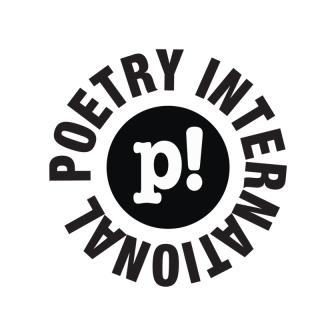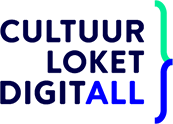Guest Curator: Henry Sepers
On the terrace - poems on the threshold

August 06, 2015
That a too-solipsistic approach can lead to great loneliness (but also good poetry) is seen in the work of Kees Ouwens. In ‘Slechts nacht’ (Just night), the poet wanders through a metaphorical landscape, which appears to have emerged entirely from his mind/spirit. There we find beautiful examples of personification, such as ‘bomen, stijfkoppig almaar zichzelf staande houdend’ (trees, stubbornly holding their ground).
The poem created on the threshold between inside and outside is neither landscape nor spirit, but has entirely its own identity and perhaps even its own will. I find this again in ‘Art poétique’ by Jacques Roubaud. ‘Ce que disait le poème, je l’ai oublié’ (What the poem was saying, I’ve forgotten), he writes. The poem is detached from the poet. You could even say: it has become a free-floating piece of his spirit, which goes its own way and repeatedly determines, anew, its own significance.
In ‘The Bird’ Hiroshi Kawasaki produces a bird simply by articulating each of its constituent parts(‘His wings/ his body/ his legs/his tail’). As if he wants to say: this is what the word can do, the naming of the bird is enough to make him fly.
In ‘Waar stil toen’ (Where the apricot tree), an impressive poem about memory, Hans Faverey reveals that the world is indeed present in your spirit, and that events can be retrieved through recollection, but, at the same time, his awareness of everything’s transience always remains. And still, this poet knows how to use his poetry as an anchor, to hold onto those things that, otherwise, irretrievably would be lost.
Henry Sepers (The Hague, 1955) has published five novels, including Bedachte stad (1997) and De zondaars (2005). Currently he is primarily active as a poet, with publications in prominent Dutch journals such as Het liegend konijn, De Poëziekrant and De Gids. He is the author of the poetry collections Baaierd (2009), Spreekt de troubadour (2012, nominated for the J. C. Bloem Poetry Prize) and, most recently, Je zadelt een vlinder (2015).
Most of the poems from my new collection, Je zadelt een vlinder (You saddle a butterfly), were written on the terrace of a house in the French countryside. You can’t get more symbolic: poetry that originates at the threshold, on the transition between outside and inside. The landscape of hills and meadows was a projection screen for me, and simultaneously, I felt it to seep into me physically, to become part of my flesh and blood. At the moment you manage (via the word) to let your body and mind merge with your surroundings, poetry can arise. I first saw this in a poem by Ezra Pound, ‘A girl’: ‘The tree has entered my hands,/The sap has ascended my arms’. This poem references the Metamorphoses of Ovid, a poet who inspired my first collection, Baaierd (Plethora). Later, I read the troubadours: they were aware, like no others, of how reality nestles into your head, and that this is how you can manipulate her.
In the short poem ‘NADA en tu espíritu’ (IT SWIMS in your spirit) by Antonío Gamoneda, I again find the same, almost mystical form of unification. ‘NADA en tu espíritu, atraviesa la tiniebla arterial, silba en la fístula blanca de tu corazón’ (IT SWIMS in your spirit, it pierces arterial gloom, hisses in the white fistula of your heart). Just like the landscape, the other can be present in you. He may even overpower you. Due to the absense of the personal pronoun in the original Spanish, it’s not entirely clear if this is even a person. This is reflected in the English translation: ‘IT SWIMS in your spirit’.That a too-solipsistic approach can lead to great loneliness (but also good poetry) is seen in the work of Kees Ouwens. In ‘Slechts nacht’ (Just night), the poet wanders through a metaphorical landscape, which appears to have emerged entirely from his mind/spirit. There we find beautiful examples of personification, such as ‘bomen, stijfkoppig almaar zichzelf staande houdend’ (trees, stubbornly holding their ground).
The poem created on the threshold between inside and outside is neither landscape nor spirit, but has entirely its own identity and perhaps even its own will. I find this again in ‘Art poétique’ by Jacques Roubaud. ‘Ce que disait le poème, je l’ai oublié’ (What the poem was saying, I’ve forgotten), he writes. The poem is detached from the poet. You could even say: it has become a free-floating piece of his spirit, which goes its own way and repeatedly determines, anew, its own significance.
In ‘The Bird’ Hiroshi Kawasaki produces a bird simply by articulating each of its constituent parts(‘His wings/ his body/ his legs/his tail’). As if he wants to say: this is what the word can do, the naming of the bird is enough to make him fly.
In ‘Waar stil toen’ (Where the apricot tree), an impressive poem about memory, Hans Faverey reveals that the world is indeed present in your spirit, and that events can be retrieved through recollection, but, at the same time, his awareness of everything’s transience always remains. And still, this poet knows how to use his poetry as an anchor, to hold onto those things that, otherwise, irretrievably would be lost.
Henry Sepers (The Hague, 1955) has published five novels, including Bedachte stad (1997) and De zondaars (2005). Currently he is primarily active as a poet, with publications in prominent Dutch journals such as Het liegend konijn, De Poëziekrant and De Gids. He is the author of the poetry collections Baaierd (2009), Spreekt de troubadour (2012, nominated for the J. C. Bloem Poetry Prize) and, most recently, Je zadelt een vlinder (2015).
© Henry Sepers
Translator: Mia You
Sponsors
























